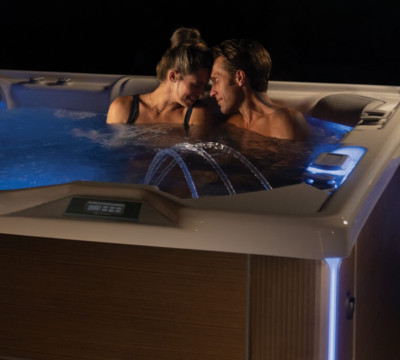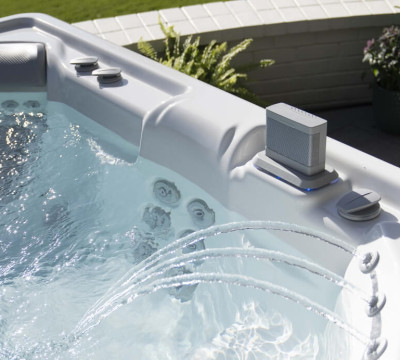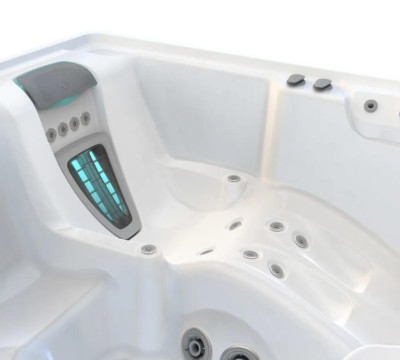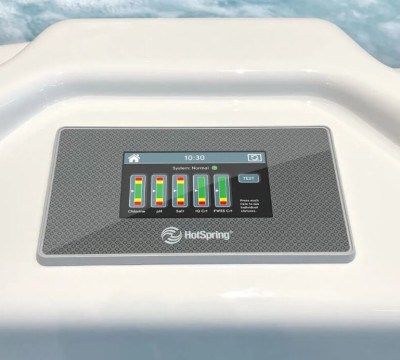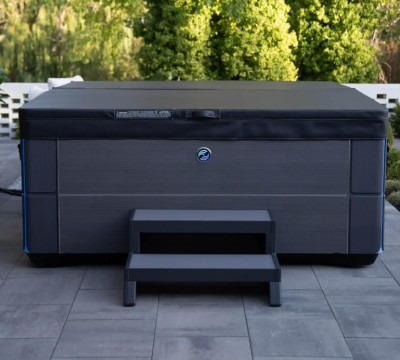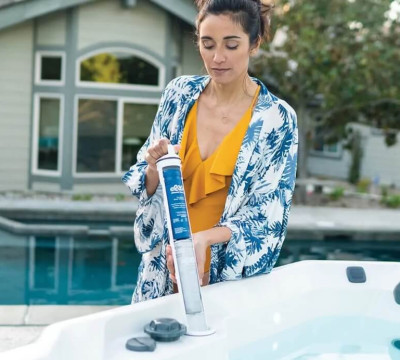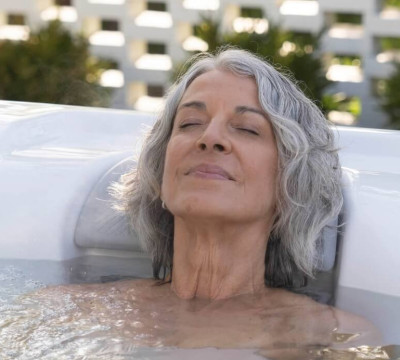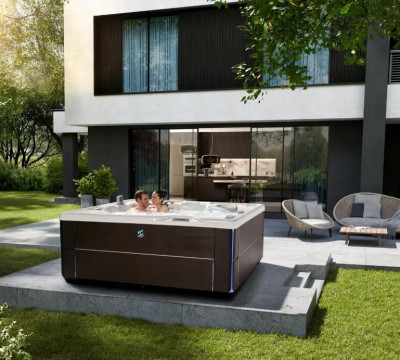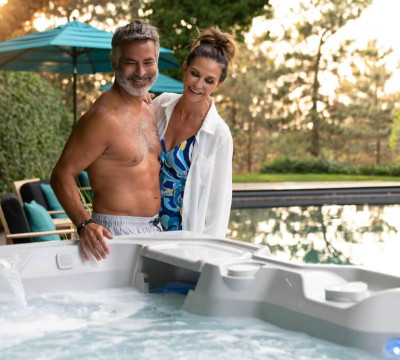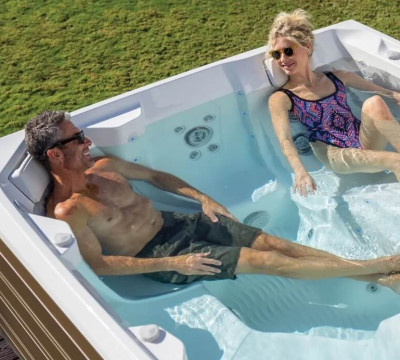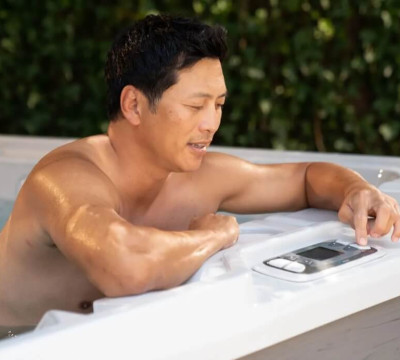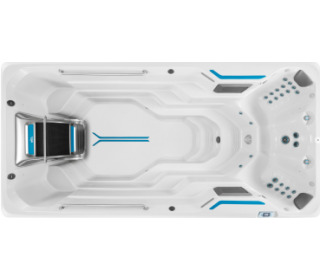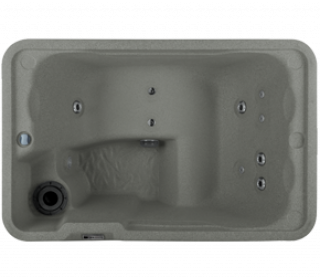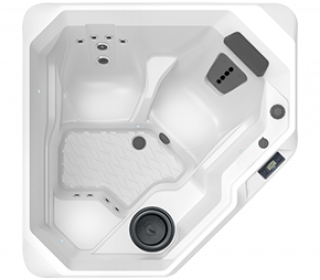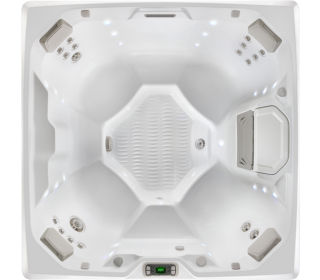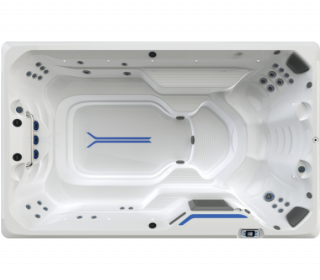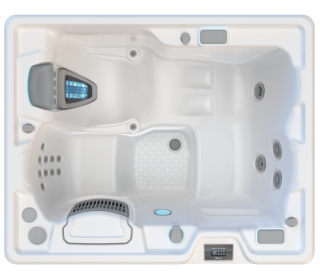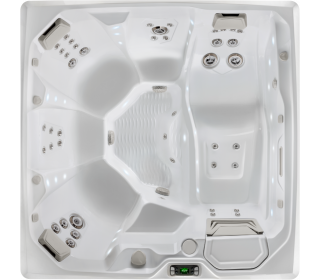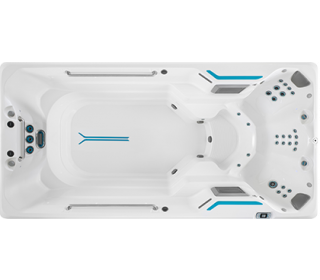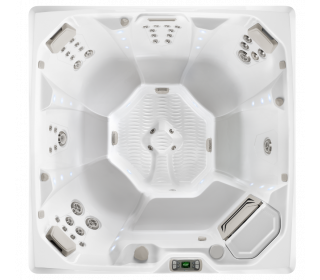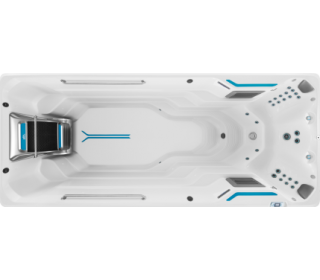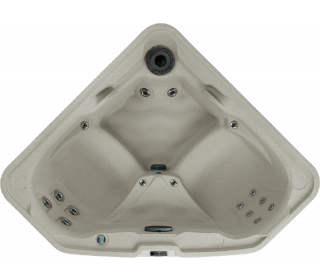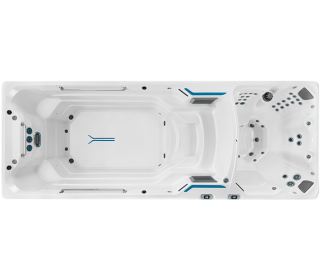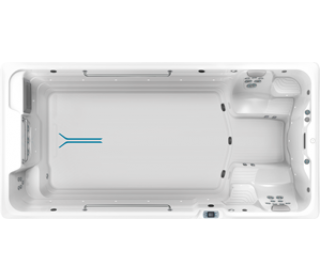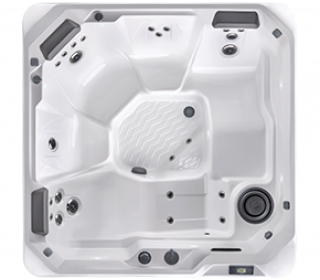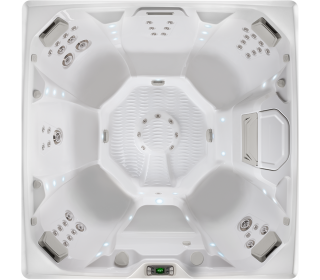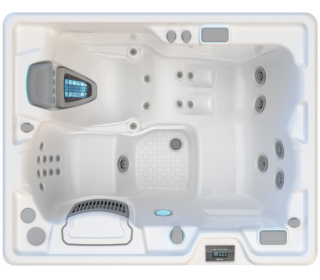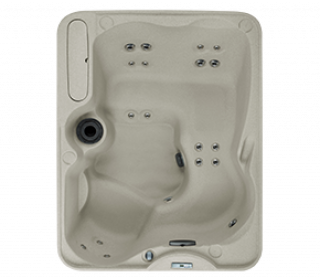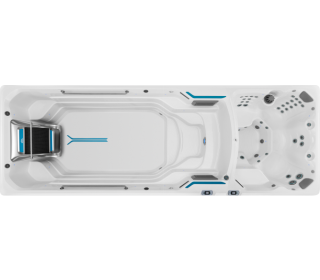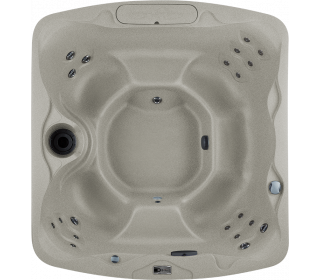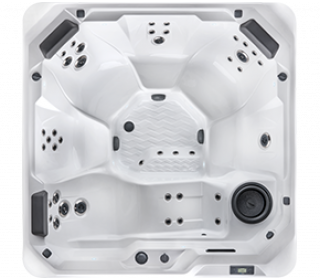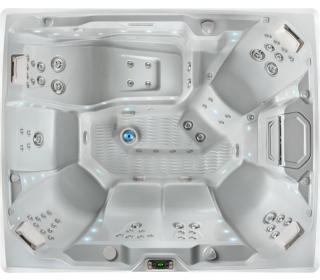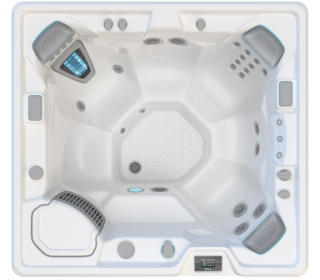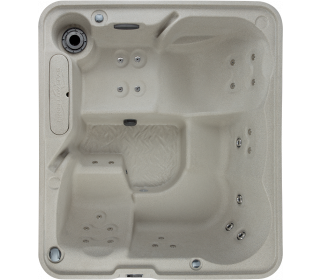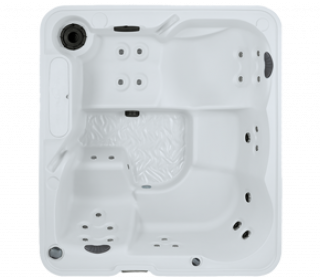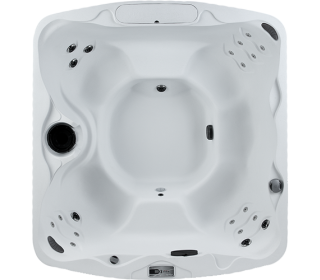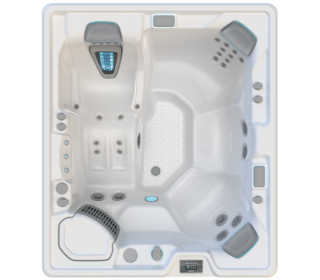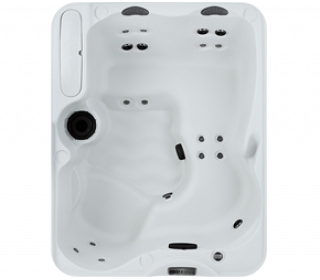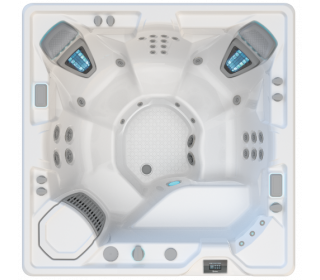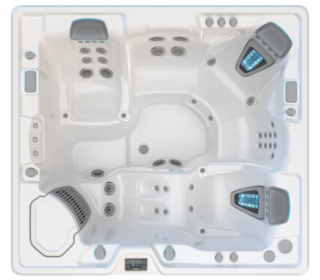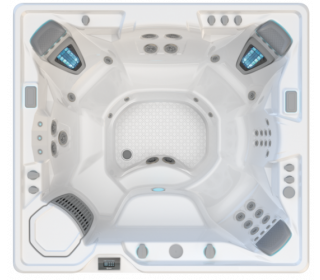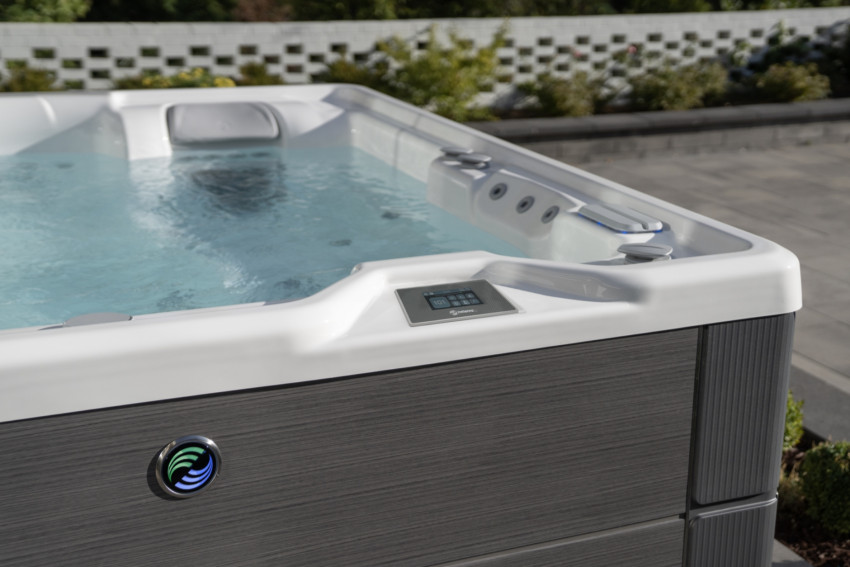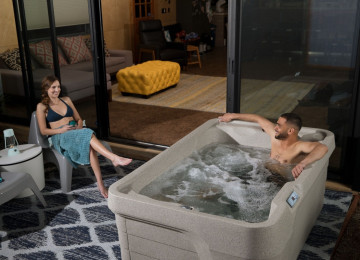You come home from a long day at work, body aching, mind racing. You’re looking forward to immersing yourself in the warm cocoon that is your backyard hot tub, and letting the stress and strain melt away. But as you remove the cover you’re hit with a rather pungent odour.
Scent is one of the first signs that something isn’t quite right with your spa water. If your spa smells too much of chlorine, you may have over-sanitised, which can cause irritation to eyes and skin. On the flipside, if the smell is a little more organic, your hot tub may not be safe to use. But there is a way to both reduce the smell and increase safety: a hot tub ozonator.
There are many different types of hot tub ozone systems on the market – potentially a confusing amount – so in this post we'll take a closer look at ozonators, a popular water treatment system capable of disinfecting water faster than chlorination.
What are ozonators?
Ozone (O3) is the less stable version of oxygen (O2). Spa ozonators are water treatment systems that use ozone to disinfect water, generating the gas from ambient air then releasing it in your spa water.
Ozone is a powerful oxidiser, and oxidation is the same process that chlorine uses to break down bacteria, viruses and other microorganisms. When ozone hits a bacterium, it breaks through its cell walls and destroys it from the inside.
The best bit is that the byproduct of this process is harmless and odourless oxygen, as the ozone converts from the less stable O3 to the more stable O2.
Ozonators are designed to reduce, not replace, hot tub chemicals like chlorine and bromine. Ozone is a gas that floats to the surface, so it will only break down microorganisms that it meets along the way. A small dose of hot tub chemicals will need to be added to take care of the contaminants that the ozone gas misses.
By greatly reducing your reliance on chlorine, a hot tub fitted with an ozonator system will offer a far less odorous and far more comfortable soak.
Choosing the right ozone system
There are three types of ozonators available: contact chamber corona discharge (CD), solid state CD and ultraviolet. Despite the chemistry and technology involved, you don’t need a science degree to understand which ozone system is right for you. Let’s break down the options to see which might best suit your needs.
Contact chamber CD
This type of ozonator is the most efficient and effective on the market. It disinfects water quickly and requires a far shorter contact time than chlorination. The reason it’s not a super common feature in spas is the fact it requires a contact chamber to be built into the spa – something that not all spa companies offer. We do at Hot Spring though – our FreshWater Ozone System features a corona discharge cell within a contact chamber, ensuring it requires little maintenance.
Solid state CD
Another type of corona discharge system, though one that is being overtaken by contact chamber corona discharge, this type of ozonator works similarly to the Hot Spring example above, but requires more maintenance, including the replacement of the chip every 1-5 years (depending on usage and brand).
Ultraviolet (ballast)
Ultraviolet ozonators feature a lamp that emits UV-C light to convert O2 into O3. This ozone is then released into the spa to do its work. UV ozonators require no maintenance, though they have a shorter lifespan than other types – usually around 9,000 hours. They are also less effective than CD systems, as they’re unable to penetrate through dirt or bubbles, which can leave harmful bacteria in the water.

A UV lamp from a competitor’s spa that has become coated over time, making it unable to properly sanitise the water.
Hot Spring FreshWater Ozone vs. FreshWater Salt System
At Hot Spring we offer two state of the art water care systems: the FreshWater Ozone System and the FreshWater Salt System. Here’s how they differ.
The Hot Spring FreshWater Ozone System
Our FreshWater Ozone System is a chemical-free water care system that disinfects your hot tub using the contact chamber corona discharge method mentioned above. The ozone gas it produces breaks down harmful contaminants such as bacteria, viruses and other organic materials, leaving only oxygen behind.
The ozone gas is produced by a corona discharge cell and injected into the water. It requires very little maintenance and produces up to 10x more ozone than other systems, making it highly effective at keeping your spa water clean and safe.

The Hot Spring FreshWater Salt System
The Hot Spring FreshWater Salt System utilises an entirely different method to sanitise your hot tub water. Rather than mixing chlorine into the spa water, this saltwater-based water care system uses clever technology, including diamond electrodes, to organically generate the perfect amount of chlorine and other oxidisers from salt.
The FreshWater Salt System is low maintenance and perfectly easy to use. It keeps your water sanitised for longer – up to a year – with little-to-no chlorine smell. It allows you to enjoy the comfort of clean, clear, soft and fresh water without the harsh chemicals.
Both our ozone and salt systems are effective in keeping spa water clean and safe. They just do so in different ways. The choice between the two systems depends on your personal preference and individual needs. It’s also worth remembering that the FreshWater Ozone System doesn’t completely remove the need for chlorine, it just dramatically reduces your use.
Less work, fewer chemicals, a better soak
A soak in your hot tub doesn’t need to be defined by the tangy odour of chlorine, or the worry that your water isn’t as clean as it needs to be. With the help of a high-end Hot Spring water care system you can enjoy the most comfortable of soaks while being confident that unwanted intruders are being safely dealt with.
What’s more, you’ll hardly have to lift a finger – at Hot Spring we build spas that require less work and allow you to enjoy more play.
Ready to experience the Hot Spring difference? Get in touch with your local dealer.


